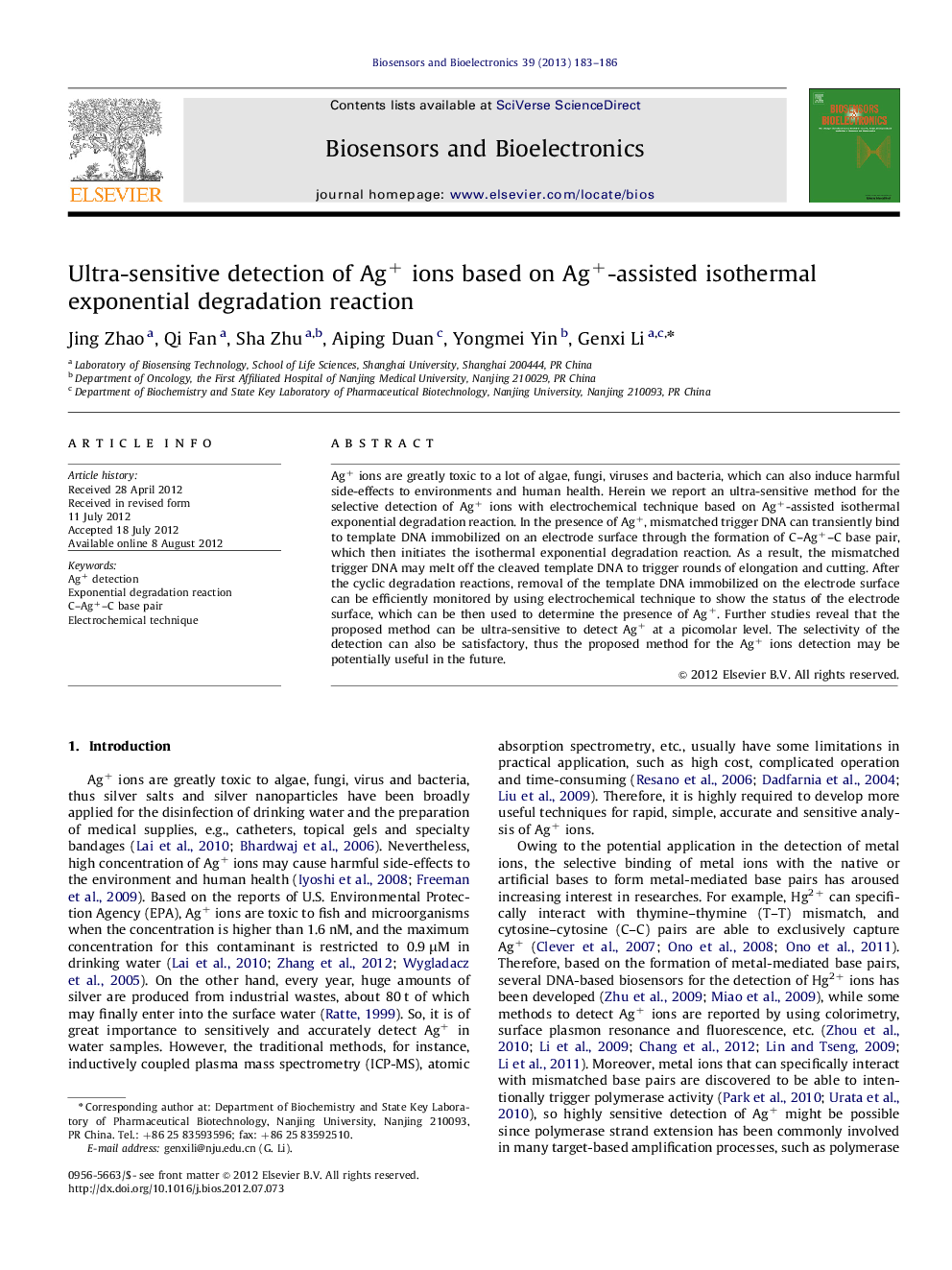| Article ID | Journal | Published Year | Pages | File Type |
|---|---|---|---|---|
| 867226 | Biosensors and Bioelectronics | 2013 | 4 Pages |
Ag+ ions are greatly toxic to a lot of algae, fungi, viruses and bacteria, which can also induce harmful side-effects to environments and human health. Herein we report an ultra-sensitive method for the selective detection of Ag+ ions with electrochemical technique based on Ag+-assisted isothermal exponential degradation reaction. In the presence of Ag+, mismatched trigger DNA can transiently bind to template DNA immobilized on an electrode surface through the formation of C–Ag+–C base pair, which then initiates the isothermal exponential degradation reaction. As a result, the mismatched trigger DNA may melt off the cleaved template DNA to trigger rounds of elongation and cutting. After the cyclic degradation reactions, removal of the template DNA immobilized on the electrode surface can be efficiently monitored by using electrochemical technique to show the status of the electrode surface, which can be then used to determine the presence of Ag+. Further studies reveal that the proposed method can be ultra-sensitive to detect Ag+ at a picomolar level. The selectivity of the detection can also be satisfactory, thus the proposed method for the Ag+ ions detection may be potentially useful in the future.
► Ag+-assisted isothermal exponential degradation reaction is proposed. ► Ag+ ion can be ultra-sensitively detected with high selectivity. ► Metal-mediated base pair is further employed for electroanalysis.
